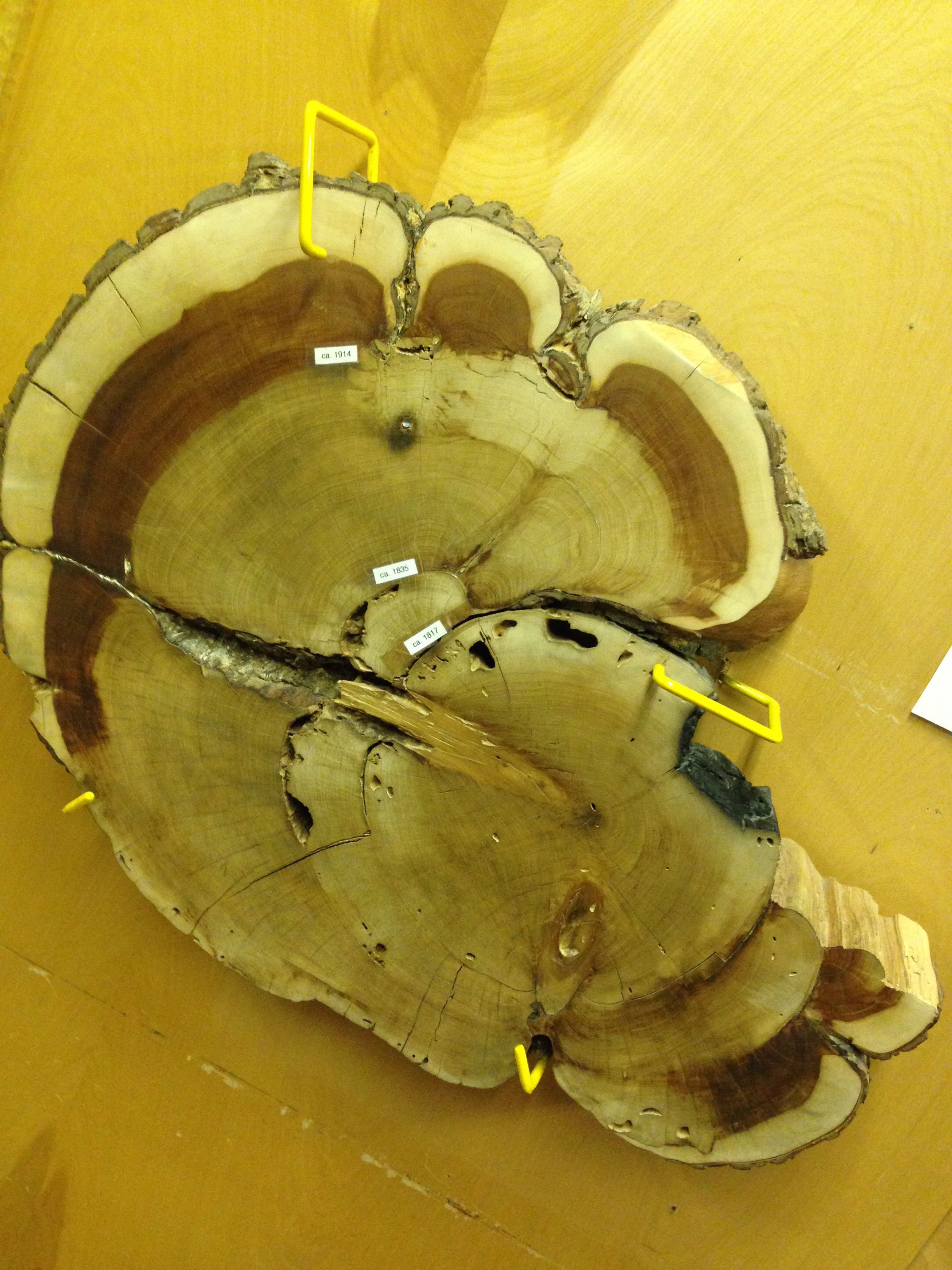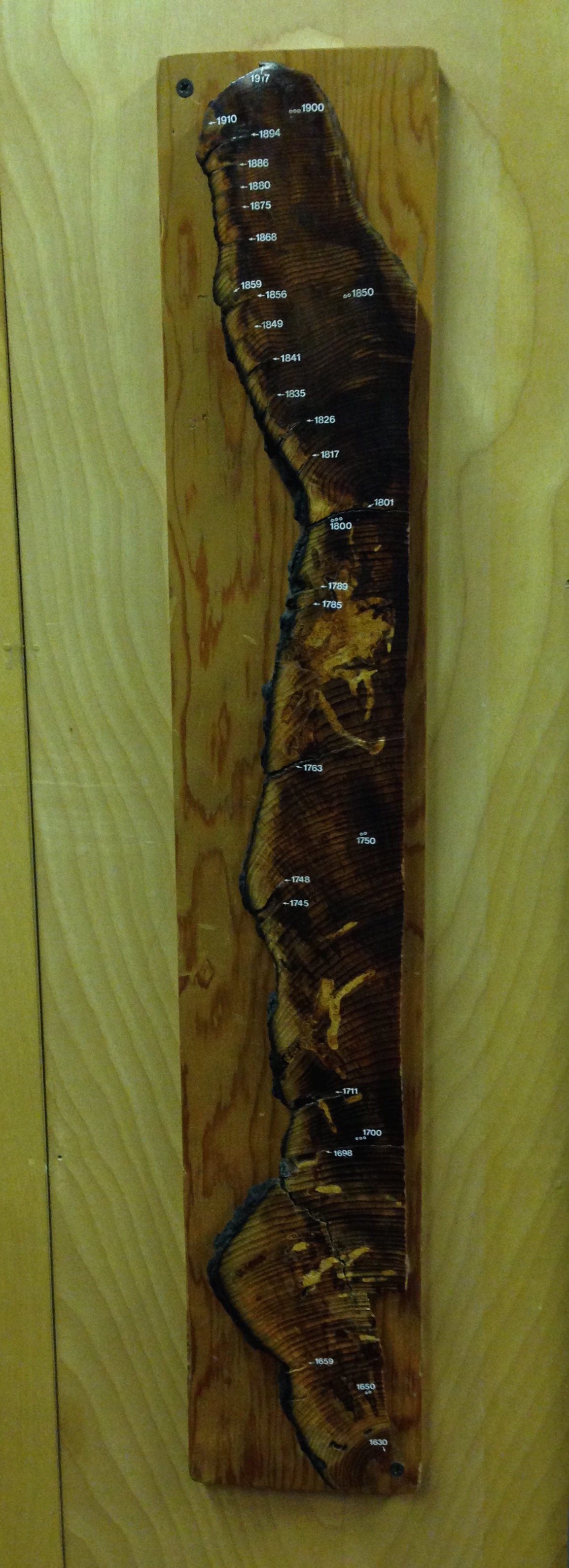Encyclopedia Dubuque
"Encyclopedia Dubuque is the online authority for all things Dubuque, written by the people who know the city best.”
Marshall Cohen—researcher and producer, CNN
Affiliated with the Local History Network of the State Historical Society of Iowa, and the Iowa Museum Association.
DENDROCHRONOLOGY: Difference between revisions
No edit summary |
No edit summary |
||
| Line 3: | Line 3: | ||
Archaeologists have, over years, developed keys indicating the width or thinness of rings found in trees from the area. Wide rings develop during years of abundant moisture. Thin rings indicate drought. One ring develops for each year the tree grew. By matching the known key to a new sample, an estimate of when the tree was cut down can be determined. | Archaeologists have, over years, developed keys indicating the width or thinness of rings found in trees from the area. Wide rings develop during years of abundant moisture. Thin rings indicate drought. One ring develops for each year the tree grew. By matching the known key to a new sample, an estimate of when the tree was cut down can be determined. | ||
[[File:dendro1.jpg|350px|thumb|left|The innermost ring is marked 1817 while the furthest white label indicates 1914.]] | [[File:dendro1.jpg|350px|thumb|left|The innermost ring is marked 1817 while the furthest white label indicates 1914. Photo courtesy: Chiricahua National Monument]] | ||
[[File:dendro2.jpg|550px|thumb|left|This cross section of an alligator juniper indicates 1630 at the bottom and 1917 at the top.]] | [[File:dendro2.jpg|550px|thumb|left|This cross section of an alligator juniper indicates 1630 at the bottom and 1917 at the top. Photo courtesy: Chiricahua National Monument]] | ||
[[Category: Terms]] | |||
Latest revision as of 03:45, 1 March 2015
DENDROCHRONOLOGY. Determining the age of a structure can sometimes be estimated by looking at the wooden beams. In log cabins, for example, the bark was left on the outside of the log, so a definite final ring can be seen in a cross-section.
Archaeologists have, over years, developed keys indicating the width or thinness of rings found in trees from the area. Wide rings develop during years of abundant moisture. Thin rings indicate drought. One ring develops for each year the tree grew. By matching the known key to a new sample, an estimate of when the tree was cut down can be determined.



